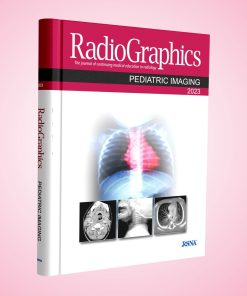-
×
 Radiographics Pediatric Imaging 2023 1 × 20 $
Radiographics Pediatric Imaging 2023 1 × 20 $ -
×
 Radiology Gastrointestional: Board and Certification Review, 7th edition (Azw3 Book) 1 × 35 $
Radiology Gastrointestional: Board and Certification Review, 7th edition (Azw3 Book) 1 × 35 $ -
×
 Handbook of Neurologic Music Therapy, 2nd Edition (EPUB) 1 × 6 $
Handbook of Neurologic Music Therapy, 2nd Edition (EPUB) 1 × 6 $ -
×
 Unraveling the Exposome: A Practical View (PDF) 1 × 5 $
Unraveling the Exposome: A Practical View (PDF) 1 × 5 $ -
×
 Using Mixed Methods Research Synthesis for Literature Reviews: The Mixed Methods Research Synthesis Approach (Mixed Methods Research Series Book 4) (EPUB) 1 × 5 $
Using Mixed Methods Research Synthesis for Literature Reviews: The Mixed Methods Research Synthesis Approach (Mixed Methods Research Series Book 4) (EPUB) 1 × 5 $ -
×
 Clinical EEG of Adults and Adolescents (EPUB) 1 × 10 $
Clinical EEG of Adults and Adolescents (EPUB) 1 × 10 $ -
×
 Laboratory Manual for Clinical Anatomy and Physiology for Veterinary Technicians, 4th Edition (PDF) 1 × 7 $
Laboratory Manual for Clinical Anatomy and Physiology for Veterinary Technicians, 4th Edition (PDF) 1 × 7 $
Medical Ebook Review
Oral and Maxillofacial Radiology: Essential Insights for Dental Professionals
In the ever-evolving field of dentistry and medical radiology, it’s crucial for practitioners to stay informed about the latest developments in diagnostic imaging techniques. One such invaluable resource is Diagnostic Imaging: Oral and Maxillofacial, Third Edition. Authored by a distinguished team of experts—Lisa J. Koenig, Dania Tamimi, Susanne E. Perschbacher, and Husniye Demirturk—this book serves as a bridge between dentistry and medical radiology. If you are a professional in this area or simply interested in improving your understanding of oral and maxillofacial imaging, this review will provide you with an in-depth look at the product, its features, and my personal experience.
Product Brand
The authors of Diagnostic Imaging: Oral and Maxillofacial come from various backgrounds within the dental and medical fields, ensuring that the content is both comprehensive and practical. Lisa J. Koenig, for instance, brings her expertise in BChD DDS MS, while co-authors Dania Tamimi and Susanne E. Perschbacher contribute their wealth of knowledge in maxillofacial radiology. This diverse team positions the book as an authoritative source for anyone involved in oral and maxillofacial diagnostics.
Product Features
Diagnostic Imaging: Oral and Maxillofacial, Third Edition stands out due to its compelling features that cater to both seasoned professionals and newcomers alike. Here’s a breakdown of its key features:
Comprehensive Coverage of Imaging Techniques
The book does not shy away from discussing the intricacies of various imaging modalities like CT and Cone Beam CT (CBCT). Each technique is meticulously explained, providing readers with a detailed understanding that goes beyond surface-level information.
Detailed Explanations
Each imaging technique comes with clear definitions and clarifications. This ensures that even those new to the field can grasp complex concepts. The approach taken by the authors allows for a smoother learning curve, which is particularly beneficial for students and early-career professionals.
Visual References
The use of high-quality illustrations throughout the book cannot be overstated. These visuals complement the text, making it easier to understand intricate anatomical structures. A picture may speak a thousand words, and in the case of diagnostic imaging, it can also save countless hours of confusion.
Case Studies
Real-world examples and case studies add depth to the theoretical knowledge presented. Seeing the application of imaging techniques in actual cases helps practitioners make more informed decisions when facing similar situations in their practice.
User-Friendly Layout
One of the standout features of this edition is its user-friendly design. The layout is intuitive, allowing for easy navigation through different sections, whether you’re looking for specific imaging protocols or guidelines.
Organized Structure
The book is organized in a logical flow, making it simple for readers to follow along. This thoughtful arrangement minimizes frustration and maximizes effective learning.
Quick Reference
For busy practitioners, having a quick-reference guide is essential. The book’s design allows for rapid access to valuable information without having to sift through dense paragraphs.
Educational Resources
Additionally, supplementary educational resources linked to the book provide further opportunities for learning. Readers can explore topics in greater depth beyond what is presented in the text, fostering a culture of continuous improvement.
Up-to-Date Information
In a field where technology rapidly evolves, staying current is vital. The third edition is packed with the latest advancements in oral and maxillofacial imaging, ensuring practitioners have the most relevant information at their fingertips.
Recent Advancements
The authors have made a concerted effort to include recent advancements and trends in the field, providing readers with insights into how these innovations impact clinical practice.
Relevance to Current Practices
By addressing contemporary challenges and technologies, the book bridges the gap between theoretical knowledge and practical applications. This makes it particularly useful for those looking to enhance their skill set in an ever-changing landscape.
Future Trends
Moreover, the text discusses expected future trends in oral and maxillofacial imaging, encouraging practitioners to think critically about how they might adapt to upcoming changes in technology and methodologies.
Educational Approach
Distinguished by its pedagogical framework, the book incorporates various teaching methods that engage readers on multiple levels.
Illustrative Learning
The heavy reliance on illustrations facilitates a visual learning experience that aids memory retention. When readers can visualize anatomy and imaging results, they tend to grasp and retain information more effectively.
Interactive Quizzes
Some editions include quizzes or assessments designed to test comprehension. Interacting with the material solidifies learning and encourages users to engage actively with the textbook rather than passively reading.
Group Study Potential
Given its user-friendly layout and comprehensive coverage, this book is also excellent for group study sessions. Professionals can gather and discuss key topics, enhancing their collective understanding and problem-solving abilities.
My Experience
Having used this textbook extensively during my career as a dental practitioner, I’ve found it to be an essential companion in my practice. Its multifaceted approach has significantly improved my knowledge base and confidence in utilizing diagnostic imaging techniques.
Practical Application
Incorporating the book into my daily routine has transformed my diagnostic skills. When faced with complex cases, I find myself referring back to the text frequently. The clarity it provides has allowed me to make more informed decisions, which ultimately translates to enhanced patient care.
Enhanced Diagnostic Skills
In several scenarios, I was able to identify conditions that I might have otherwise missed. This not only benefited my patients but also fostered trust and credibility within my practice.
Confidence Boost
With each successful diagnosis, I felt an increasing sense of confidence. This self-assuredness has positively impacted my interactions with both patients and colleagues, further establishing my reputation in the field.
Continuous Learning
The authors’ commitment to keeping the material up-to-date resonates deeply with my own belief in lifelong learning. As I navigate new technologies and techniques, this book remains a reliable resource that complements my ongoing education.
Staying Ahead
Being well-versed in the latest practices has empowered me to lead discussions among peers, sharing insights gleaned from the text.
Networking Opportunities
Moreover, participating in advanced training sessions that focus on topics covered in the book has opened doors for networking with fellow professionals who are equally passionate about oral and maxillofacial imaging.
Product Price
When considering the purchase of Diagnostic Imaging: Oral and Maxillofacial, Third Edition, it’s important to evaluate its price against the value it delivers.
Cost-Benefit Analysis
While some may view the cost of this textbook as steep, I argue that the investment is justified when considering the immense benefits received. The knowledge gained can lead to improved clinical outcomes, which far outweighs the initial expenditure.
Long-term Value
Purchasing this book is not just a short-term expenditure; it’s a long-term investment in one’s professional development. The insights gleaned will pay dividends over time, especially as one encounters increasingly complex cases.
Accessibility Options
Additionally, the availability of the PDF format offers flexibility for those who prefer digital resources. This option may suit a broader audience, including those who may have budget constraints but still wish to access high-quality educational materials.
Pros and Cons
Like any product, Diagnostic Imaging: Oral and Maxillofacial, Third Edition has its strengths and weaknesses. Below, I’ve outlined some of the notable pros and cons based on my experience with the book.
Advantages
- Comprehensive Content: The wide-ranging material ensures that readers receive a holistic view of oral and maxillofacial imaging.
- User-Friendly Design: Its intuitive layout makes it accessible to both beginners and seasoned professionals.
- Visual Learning: The extensive use of illustrations enhances understanding and retention of complex concepts.
- Up-to-the-Minute Information: The emphasis on current trends keeps practitioners well-informed and prepared for future advancements.
- Supportive Learning Resources: Additional materials aid in expanding knowledge and engaging with the community of practitioners.
Disadvantages
- Price Point: Some may find the cost prohibitive, although the value tends to justify the expense.
- Overwhelming Information: The breadth of content can be daunting for newcomers, potentially leading to information overload.
- Limited Digital Features: While the PDF format is helpful, some may desire interactive features that facilitate a more dynamic learning experience.
- Niche Focus: It specifically addresses oral and maxillofacial imaging, which may limit its appeal to general practitioners without specific interest in this area.
- Heavy Text: For those seeking quick references, the depth of detail may sometimes feel excessive, making it less suitable for rapid consultation.
Expert Advice
Professional input can significantly enrich one’s understanding of any text. Drawing on the opinions of other industry experts can provide a well-rounded perspective on the book’s utility and relevance.
Recommendations from Peers
Many colleagues echo my sentiments regarding the book’s quality and comprehensiveness. Several have pointed out that the text serves as both a learning tool and a reference, capable of being consulted across various stages of one’s career.
Mentorship Insights
Mentors within the field often recommend this book to their mentees, indicating its role in foundational education. Their endorsements emphasize the text’s value as a stepping stone for developing specialized skills.
Continuing Education
Experts also advocate for integrating readings from this book into continuing education programs. Workshops that utilize the material help foster collaboration and discussion among professionals, emphasizing the importance of shared knowledge in advancing the field.
Conclusion
In summary, Diagnostic Imaging: Oral and Maxillofacial, Third Edition emerges as a cornerstone resource for practitioners within the dental and medical radiology fields. With its comprehensive coverage, user-friendly layout, and up-to-date information, it serves as an indispensable tool for both new learners and experienced professionals alike.
Having personally experienced the transformative effects of this book on my practice, I can confidently recommend it to anyone seeking to enhance their understanding of oral and maxillofacial diagnostic imaging. Its multifaceted approach benefits not only individual practitioners but also teams engaged in collaborative care settings. In an era where continuous improvement is paramount, having a trusted resource like this book can make all the difference in delivering exceptional patient care.


